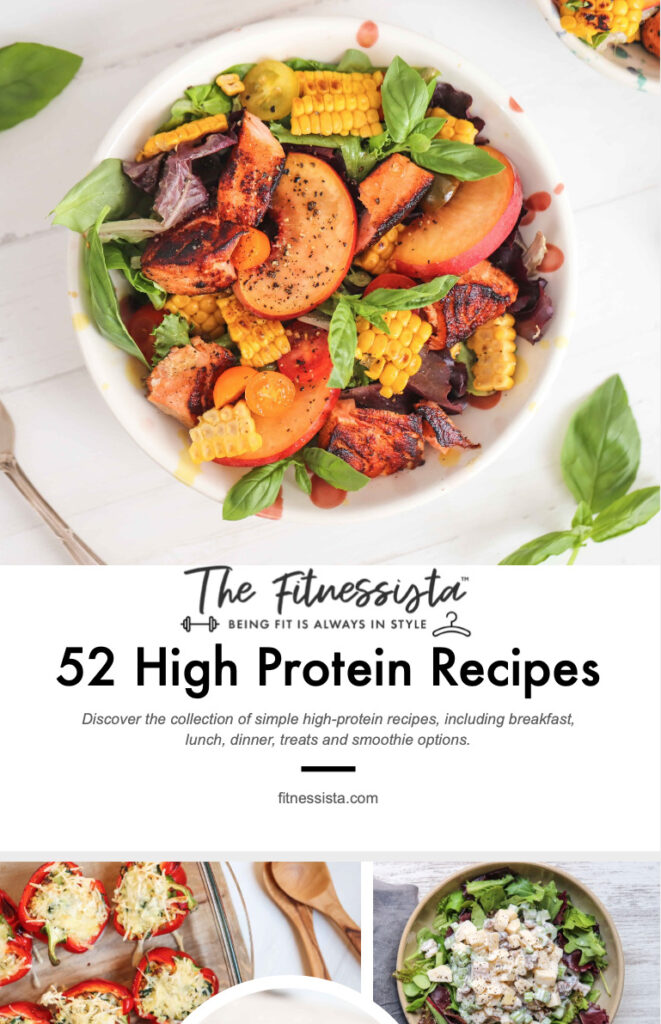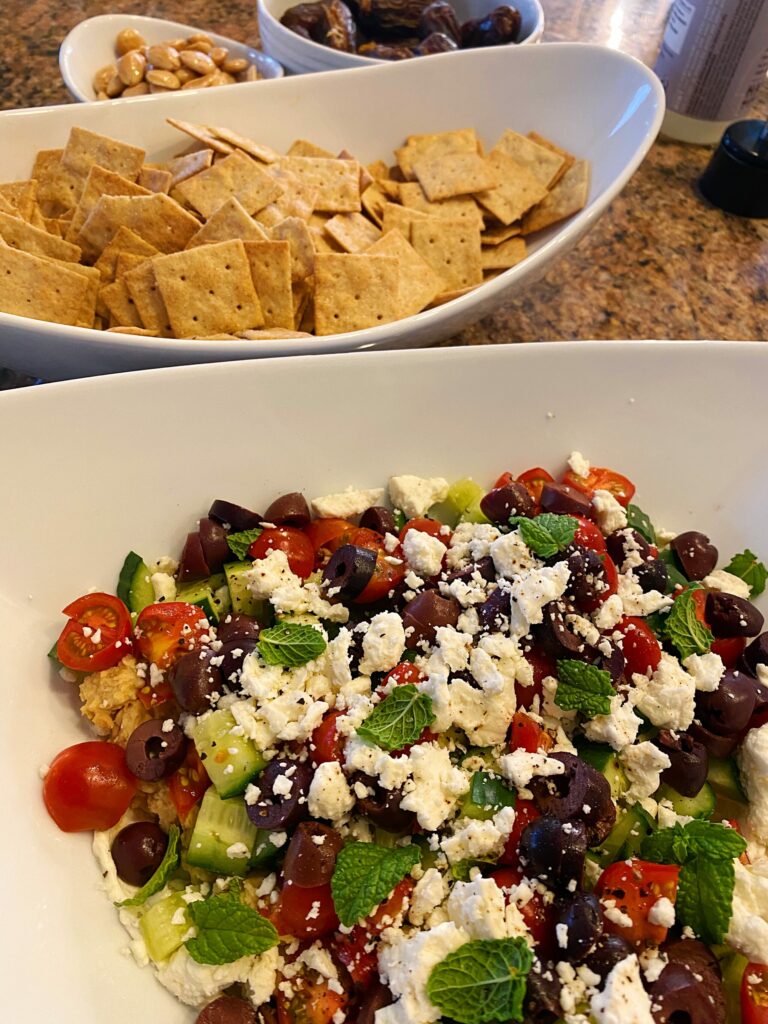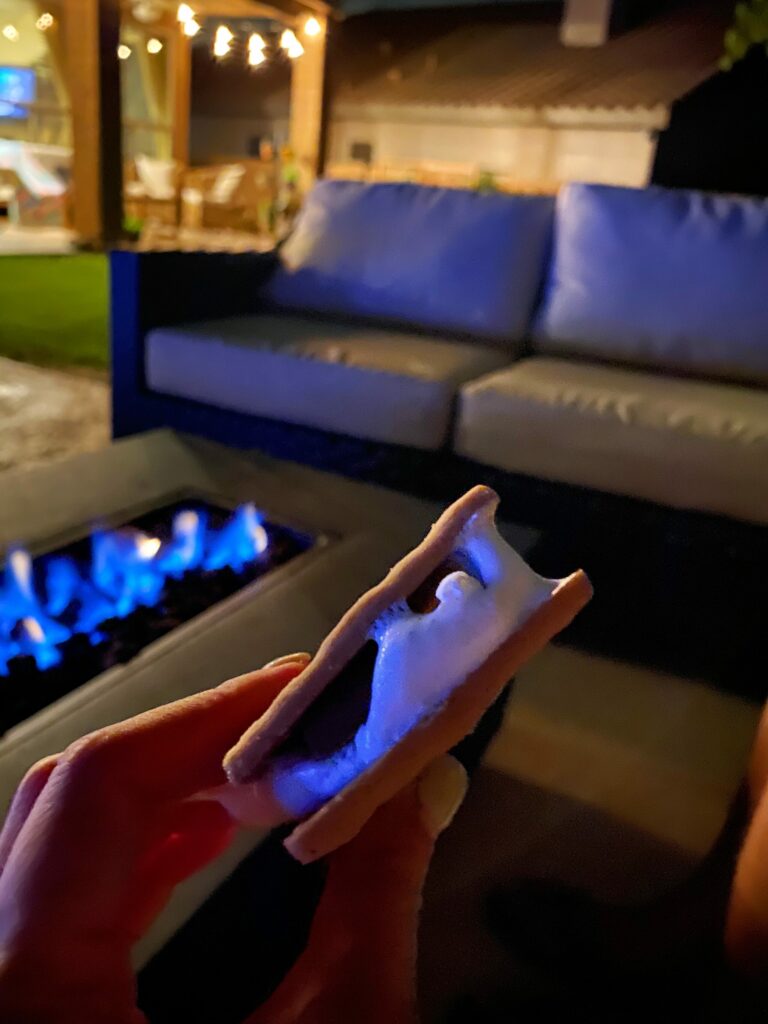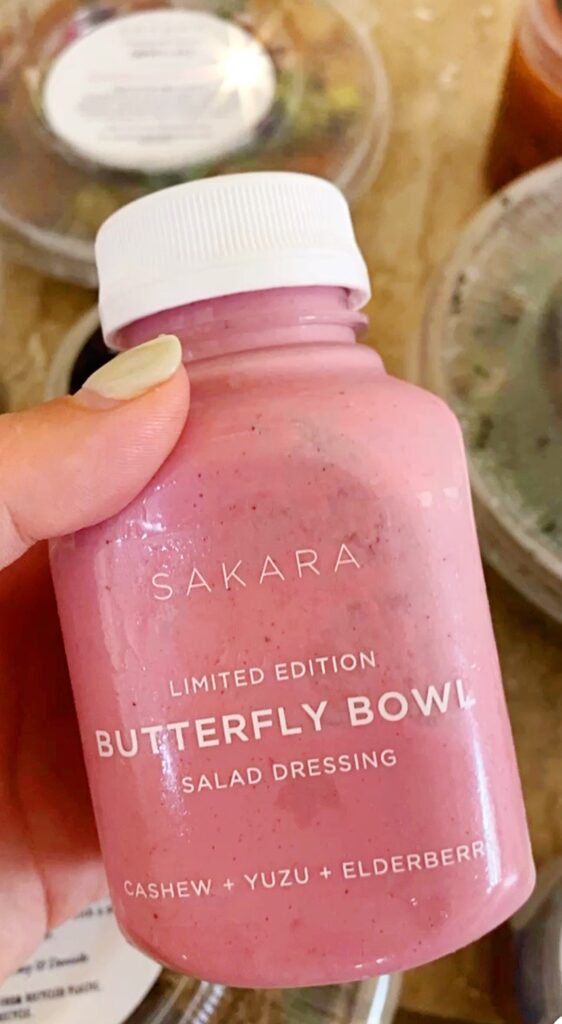Fitness Blog - Get in the best shape of your life with expert fitness tips, workouts, muscle-building guides, home training programs, and fat-burning routines. This blog helps you boost strength, build endurance, and sculpt your dream body with smart, science-based methods. Whether you're a beginner or advanced athlete, unlock natural fitness hacks, motivation tips, and the best ways to get results fast—at home or in the gym.
Fitness secret course
👉 Discover the fitness method top trainers secretly recommend!
Monday, August 30, 2021
Common pesticide may contribute to global obesity crisis
* This article was originally published here
Sunday, August 29, 2021
Saturday, August 28, 2021
The Ultimate Fat-Loss Diet
By Daniel Gwartney, MD and Steve Blechman
Negative physical truths are difficult to deal with, as they are irrefutable and there’s no avoiding the emotional impact. If the checking account is overdrawn or the house is a mess, the facts are undeniable and cause mental anguish until the situation is corrected. This is especially true regarding self-image; a fitness-oriented or image-conscious woman may find excess or unsightly body fat embarrassing, even repulsive. Fortunately, it’s a situation that can be remedied.
A corrective set of actions for fat loss should include lifestyle changes, more rigorous attention to diet and regular exercise. The Ultimate Fat-Loss Diet offers guidelines for reaching the goals of better health, fitness and happiness. Following the suggestions provided should allow one to reduce body fat in a healthy manner; possibly reducing the risk of some of the more serious health concerns facing Americans today, including cardiovascular disease and the metabolic syndrome.
The True Benefits of Fat Loss
Diet is a word that immediately triggers discontented sighs or pained grimaces, but the truth of the matter is sensible diet plans are successful when they’re followed and combined with exercise. Some provide more rapid weight loss, but all diets will result in weight loss as long as they’re hypocaloric – providing fewer calories than are burned each day.1 However, weight loss isn’t necessarily fat loss and though reducing weight produces positive health changes, the true benefits come from fat loss. Additionally, it’s important to realize that the diet has to be sufficient to allow a person to maintain her busy schedule and have energy to exercise. Too often, people choose overly strict diets and find themselves struggling to function throughout the day, let alone make it into the gym. Beyond that, eating is also social – it’s time with friends or family. Gathering around the table to eat a 50-gram protein bar hardly offers the environment to enjoy each other’s company or share in the day’s events. The Ultimate Fat-Loss Diet accommodates these needs in a convenient and practical manner.
The most important factor to consider in any fat-loss diet is total daily calories. Yes, the drudgery of watching calories is part of this plan, but failing to monitor how much is being consumed can lead to failure. This is particularly true when dining out. Though fast-food restaurants will provide a nutrition facts guide describing the calories and other information (grams of fat, protein, sugar, etc.) about their offerings, higher-priced restaurants do not. Hidden calories are present in sauces, dressings and beverages, making it very easy to consume more than intended. It’s even worse at buffets and family-style restaurants, as the settings are designed for overindulging. Thus, to truly succeed with a diet, it’s important that most (actually all, if possible) meals be self-prepared or come in portion-controlled servings to account for all calories being consumed.2
How Many Calories Does It Take?
How many calories should a woman consume when trying to lose weight? There are complex formulas, accounting for various factors such as lean body mass, age, race, etc.3 However, for the purpose of ease-of-use and clarity, the simple calculation of 10 calories per pound of bodyweight per day is a good baseline (daily calories = 10 x bodyweight in pounds). Using this formula, a 140-pound woman would consume 1,400 calories per day (10 x 140 = 1,400). This should create a daily calorie deficit of approximately 500 calories, which theoretically leads to a loss of 1 pound of fat per week. However, as with any “one size fits all” advice, it may need to be adjusted slightly. A woman who exercises and is very active during the day may require more calories to keep up with her schedule, while a sedentary woman who isn’t as vigorous in her training might need to reduce it a bit. However, if the adjustment begins to deviate significantly from this number (more than 15 percent), then other issues may be present that might need to be evaluated by a physician, such as a thyroid condition.
The Importance of Breakfast
It’s very important to be diligent about following The Ultimate Fat-Loss Diet, as it’s been proven that the diet has a much greater impact on weight loss than exercise.4 Though it’s not glamorous or rewarding, cutting calories can reduce weight, even in the absence of exercise. The opposite isn’t necessarily true, as many studies have shown that exercising in the absence of diet management doesn’t promote weight loss.5 The role of exercise shouldn’t be devalued though, as it adds to energy expenditure (calorie burning), aids in controlling appetite and helps maintain and tone muscle.
There is no magical formula for the number of meals the daily calories should be divided into, but facts support two critical points. The first is the importance of breakfast. Breakfast is often viewed as an inconvenience; an unnecessary delay at the start of the day when time and tempers run short. The luxury of 10 extra minutes of sleep frequently overwhelms any intention of rising early enough to make an omelet or even a bowl of cereal. Yet, eating breakfast daily has been recognized as one behavior that defines subjects with long-term success in losing weight.6 The ideal breakfast would include both complex carbohydrates and protein, as the body has been without food for 12 to 14 hours in many cases. While this prolonged fast (sleep) liberates stored fat to provide energy overnight, it also robs muscle of amino acids (the building blocks of protein). A quick, simple and surprisingly tasty breakfast can be made by adding a scoop of low-carb, sugar-free protein powder to oatmeal, flavored with a teaspoon of yogurt and sprinkled with chopped walnuts. As breakfast will follow the morning exercise, it’s vital to include 15 to 25 grams of protein to replenish the amino acids lost during the overnight fast and as a result of exercise-induced breakdown.7
The Ultimate Fat-Loss Diet
Sample Menu
6:00 a.m.
16 ounces water, coffee or 100 milligrams of caffeine
6:30 a.m.
Exercise
8:00 a.m.
(End of exercise): Oatmeal and protein powder with nonfat, sugar-free yogurt and walnuts or meal-replacement drink (approximately 200 calories with 20 grams of protein)
10:00 a.m.
One cup of low-fat, sugar-free cottage cheese and a piece of fruit
12:30 p.m.
4-6 ounces of salmon, sautéed spinach or other vegetable and small salad with extra-virgin olive oil dressing
3:00 p.m.
Nonfat, sugar-free yogurt and a handful of almonds
6:00 p.m.
4-6 ounces of chicken, fish, turkey or lean meat, steamed broccoli and cauliflower and a small salad with extra-virgin olive oil dressing and 3 grams of fish oil capsules
8:00 p.m.
Nonfat, sugar-free yogurt, a handful of almonds
During the day, drink at least 2 to 3 liters of water.
The Role of Insulin
Aside from breakfast, the other meals are more flexible. Some people favor having three meals a day, but there’s evidence suggesting that more frequent and smaller meals may be healthier and promote greater fat loss. Barry Sears popularized the idea of a more balanced approach to nutrition with the Zone Diet and its 40-30-30 ratio of carbs to protein to fat, respectively (measured as calories, not grams). Part of the rationale behind his program was the diet’s ability to modify the high levels of insulin associated with weight gain.8 Insulin is a hormone released from the pancreas, a gland located in the abdomen. Insulin can be thought of as a storage hormone, as it shuttles nutrients into tissues to be used for energy production. However, when more calories are consumed than required (especially sugar, the main trigger for insulin release), insulin levels rise and fatty acids are shuttled to the fat cells to be stored rather than being burned for energy. Over time, high insulin levels can and do lead to an increase in total body fat. Even worse, the body appears to become less sensitive to insulin over time, forcing the pancreas to maintain high blood levels of insulin, preventing fat cells from releasing stored fat as efficiently during exercise or overnight. It’s critical to minimize insulin so that stored fat can be broken down and burned. Otherwise, the body will be primed to preserve stored fat and catabolize muscle instead to make up the energy deficit. Remember, the goal is to lose fat, not just weight.
In addition to promoting fat storage, high insulin levels are a central factor in the silent epidemic affecting millions of Americans called the metabolic syndrome.9 Associated with high blood pressure and dangerous blood lipid (fat and cholesterol) levels, people with high insulin levels (including type 2 diabetics) suffer more frequent and severe cardiovascular events, such as heart attacks and strokes. Optimizing insulin sensitivity is essential for long-term health and well-being.
Lowering insulin levels can be accomplished via several mechanisms, but the two primary dietary approaches are decreasing the size of each meal and reducing the sugar/carbohydrate content of each meal. Decreasing meal size is easily accomplished by increasing the number of feedings by adding a small snack mid-morning and mid-afternoon.10 In addition to reducing the stimulus for insulin secretion, it will also help adhere to sensible eating as a ravenous hunger is never allowed to develop. Reducing the sugar/carbohydrate content of each meal can be managed by following a higher protein diet and choosing low-glycemic foods. Low-glycemic refers to how fast the carbohydrates in a food are released as sugar into the bloodstream.11 Processed starches and simple sugars are high-glycemic foods, as they cause a rapid dumping of insulin and often end up causing a state called post-prandial hypoglycemia – the feeling of low energy and sleepiness that follows a massive sugar binge.
Fortunately, it’s much easier to follow a low-glycemic diet nowadays. For decades, the concept of the low-fat diet was forced onto Americans, through public service announcements, articles and the food pyramid. Dieticians endorsed the practice of replacing fats with lower-calorie (when compared gram to gram), carbohydrate-based food choices. Unfortunately, that advice didn’t seem to work well, as Americans trended to higher rates of obesity.12 Then the high-protein diet revolution turned that advice upside down, with comparative studies showing that high-protein diets actually induced greater weight loss quicker in the short term.1 Over the course of a year or so, the difference is less considerable, as all diets that are hypocaloric will result in significant weight loss eventually.13 Though the high-protein diets remain controversial, it’s clear that they’ve been very successful for many people who failed on low-fat diets. Research has shown that increasing the amount of protein in the diet promotes weight loss/fat loss through a number of healthy and beneficial mechanisms: dietary protein increases the satiety of a meal, making it easier to avoid the temptation to overeat; protein decreases the appetite, so eating between scheduled meals is better controlled; protein increases thermogenesis, which is the process whereby calories are burned to generate heat rather than cellular energy; and lastly, amino acids in protein, particularly leucine, help maintain lean body mass, which often wastes away during hypocaloric dieting.14 Maintaining lean mass is vital as the greatest percentage of calorie burning takes place in lean tissue.
Protein and Fat Sources
Getting protein in the diet is relatively simple and the variety of choices allows for a greater number of options. The primary caveat is to avoid fatty cuts of meats, including fried and breaded foods. Suitable sources are plentiful: fish, poultry, lean cuts of beef, non-fat dairy, legumes, eggs, etc. A large body of evidence suggests that dairy proteins may promote weight loss, possibly due to the high calcium content, but a recent yearlong trial disputes this claim.15,16
Though one looks for protein sources that are not fatty, dietary fat plays a beneficial role in nutrition. We have now learned that balanced diets are better and healthier. Saturated fat has long been the scourge of nutritionists, but recent evaluations of the science suggest saturated fat is not unhealthy in small amounts.17 Ironically, the evil player in the fat cast appears to be trans fats, found in hydrogenated oils and margarines. A clear relationship exists between various types of fat and overall metabolism. In addition to being heart healthy, omega-3 fatty acids (fish oil) appear to have a fat-reducing effect. A small study published in the International Journal of Obesity reported that substituting fish oil for saturated fat (6 grams per day) resulted in the loss of nearly two pounds of body fat, in part by increasing the amount of fat burned for calories.18 Fish is not a staple for many people and aside from tuna can be quite expensive. Fish oil gelcaps offer an alternative for getting more of this nutrient.
Monounsaturated fat (such as oleic acid in olive oil) is another heart-healthy fat associated with weight loss through increased fat-calorie burning. One study suggests that oleic acid is more easily burned following exercise than other types of fat.19 Almonds are another source of monounsaturated fat. A published study suggests that adding almonds to a hypocaloric diet increases weight loss, reduces the waistline and lowers blood pressure compared to a similar diet without the nuts.20 The Ultimate Fat-Loss Diet agrees with the recommendation that 30 percent of calories (approximately 50 grams) come from fat, with very small amounts of saturated fat. Consuming 3 to 6 grams of fish oil daily provides ample omega-3 fats, allowing for a generous serving of monounsaturated fat (such as oleic acid in olive oil). Though this seems tedious, extra-virgin olive oil works well as a dressing on vegetables and salads. Consuming omega-3 fats from fish or fish oil and monounsaturated fats provides the best of all worlds and also aids in improving the body’s response to insulin, keeping the fat storage signal suppressed.
Fish, non-fat, sugar-free yogurt and extra-virgin olive oil are staples in a particular diet that is associated with a lower incidence of many of the diseases that afflict Americans. The Mediterranean diet, so-called because it reflects the traditional fare of the cultures living near the Mediterranean Sea, appears to offer protective benefits to people raised on the diet, as the rates of obesity, heart disease and many cancers are much lower in those regions.21 The Ultimate Fat-Loss Diet differs from the Mediterranean diet in that the protein intake is higher, but this is to accommodate the goal of weight loss/fat loss rather than weight maintenance.
Water and Other Essentials
Red wine is commonly consumed in the Mediterranean cultures as well, possibly accounting for some of the health benefits. A glass of red wine a day may also aid in fat loss, as moderate drinkers appear to have better insulin sensitivity and are less prone to type 2 diabetes.22 Heavy drinking needs to be avoided though, as alcoholic beverages are calorie dense and drinking more than the recommended limits is associated with a greater risk of diabetes.
Water is essential, not only because of the need for proper hydration during the hot, humid months, but also because it replaces calorie-containing beverages and may aid in energy expenditure. Drinking a half-liter of water actually increases the neurotransmitters that signal for fat release from the fat cells.23 Also, drinking ice water forces the body to generate more heat to bring the water up to body temperature, another source of calorie wasting. The general rule of thumb (not counting any excess water loss during exercise) is 64 ounces a day of water. However, most athletes consume double that amount. One source offers a simple, if silly way to measure hydration – you should drink enough water to keep your urine colorless.24 Dark yellow urine is a sure sign of relative dehydration.
Knowing what and how much to eat is only part of the lesson. In order to maximize the benefits of the The Ultimate Fat-Loss Diet, it’s important to time the diet to best advantage.
Dietary Caveats to Training
Early morning exercise takes place to maximize the burning of calories derived from fat. In order to facilitate this, it’s important not to sabotage the unique metabolic environment present after a night’s sleep. Overnight fasting primes the fat-burning process. When fasting, fat cells are stimulated by hormones that signal a need for the stored calories to be released, including growth hormone and glucagon, among others. The fat-release signal is stopped by insulin which is released when a meal is consumed, particularly a carbohydrate-containing meal.25 Insulin also reduces the secretion of a hormone produced by the stomach called ghrelin, which stimulates growth hormone release.26 In fact, just the taste of something sweet may release enough insulin to shut down the fat releasing process.27 Then the energy has to come from stored sugar (glycogen) or through the break down of lean mass protein. So it’s vital, for the purposes of this program, that no carbohydrates be consumed prior to training. Even though no carbohydrates are being consumed, hydration is vital at this time for the same reason; no water has been drunk for hours typically.
Drinking a half-liter of refrigerated water, along with a source of caffeine (coffee or a 100-milligram tablet) optimizes the metabolic environment. Caffeine enhances lipolysis and fat loss. It also increases alertness, elevates mood, heightens the ability to concentrate and wards off fatigue. A study found that one to three cups of coffee (a rich source of dietary antioxidants) daily can lower inflammation and protect against cardiovascular disease and other inflammatory diseases.30 A few people are particularly sensitive to caffeine, so it’s important to watch for signs of caffeine excess (jitteriness, tremors, headaches, blurred vision, etc). Decrease the caffeine to a tolerable dose if these symptoms do arise. People with heart disease or under the care of a physician should inquire about caffeine prior to its use.
Immediately after exercise is the time to eat breakfast or a meal replacement shake. Exercise enhances insulin sensitivity so the body is primed for nutrient absorption and carbs and proteins are effectively shuttled into the active muscle rather than fat.14 Waiting will not provide the same benefit, as the exercise effect wanes quickly and is gone within three hours.28
During the day, The Ultimate Fat-Loss Diet becomes easier to manage. By consuming breakfast, you allow for four or five more “meals.” Since eating is social as much as functional, it helps to plan larger meals at lunch and supper. These meals can be whole food, comprised of fish, chicken, turkey, or lean meat, vegetables and a small salad. Add a little extra-virgin olive oil dressing on the salad and a complete meal is prepared. Smaller servings will keep these two meals at about 400 calories each.
Thus far, approximately 1,000 calories have been consumed. The meals are small, but this allows for two or three “snacks” to be consumed throughout the day. The Ultimate Fat-Loss Diet focuses on healthy choices. A piece of fresh fruit and low-fat, sugar-free cottage cheese, or sugar-free, nonfat yogurt and almonds are excellent choices. The summer is wonderful because of the fruit selection available everywhere. Vitamins, fiber and phytonutrients are important to attaining a balanced diet.
Getting in Better Shape
In addition to the demands of family, work and other obligations, adhering to a rigorous workout schedule and cutting calories can be stressful. Getting a full night’s sleep needs to be a priority during this time, not only so you can stay alert and function well, but also because it may help promote fat loss. A lack of sleep is being associated with obesity in adults and children, even more strongly than activity habits in studies.29
Many people equate weight loss with getting in better shape, but for the athletic and health-conscious, it goes beyond that. Losing fat is the primary goal of The Ultimate Fat-Loss Diet, but doing so in a manner that supports an active lifestyle and reduces the risk of ill-health conditions are also vital considerations. Using the backbone of low-glycemic food choices, including traditional Mediterranean fare, this diet should improve fitness, appearance and well-being. The flexibility and variety of choices allows one to adopt the diet without sacrificing or feeling like a cafeteria outcast. As the inches come off and self-esteem increases, don’t be surprised to see your friends and co-workers suddenly eating the same ways, as you become their role model.
References:
1. Foster GD, Wyatt HR, et al. A randomized trial of a low-carbohydrate diet for obesity. N Engl J Med, 2003;348:2082-90.
2. Ello-Martin JA, Ledikwe JH, et al. The influence of food portion size and energy density on energy intake: implications for weight management. Am J Clin Nutr, 2005;82(1 Suppl):236S-241S.
3. Vander Weg MW, Watson JM, et al. Development and cross-validation of a prediction equation for estimating resting energy expenditure in healthy African-American and European-American women. Eur J Clin Nutr, 2004;58:474-80.
4. Dunn CL, Hannan PJ, et al. The comparative and cumulative effects of a dietary restriction and exercise on weight loss. Int J Obes, 2006;30:112-21.
5. Miller WC, Koceja DM, et al. A meta-analysis of the past 25 years of weight loss research using diet, exercise or diet plus exercise intervention. Int J Obes Relat Metab Disord, 1997;21:941-7.
6. Wyatt HR Grunwald GK, et al. Long-term weight loss and breakfast in subjects in the National Weight Control Registry. Obes Res, 2002;10(2):78-82.
7. Tipton KD, Rasmussen BB, et al. Timing of amino acid-carbohydrate ingestion alters anabolic response of muscle to resistance exercise. Am J Physiol Endocrinol Metab, 2001;281:E197-206.
8. Fontani G, Corradeschi F, et al. Blood profiles, body fat and mood state in healthy subjects on different diets supplemented with Omega-3 polyunsaturated fatty acids. Eur J Clin Invest, 2005;35(8):499-507.
9. Rutter MK, Meigs JB, et al. Insulin Resistance, the Metabolic Syndrome, and Incident Cardiovascular Events in the Framingham Offspring Study. Diabetes, 2005;54(11):3252-3257.
10. Vilsboll T, Krarup T, et al. Incretin secretion in relation to meal size and body weight in healthy subjects and people with type 1 and type 2 diabetes mellitus. J Clin Endocrinol Metab, 2003;88(6):2706-13.
11. Granfeldt Y, Wu X, et al. Determination of glycaemic index; some methodological aspects related to the analysis of carbohydrate load and characteristics of the previous evening meal. Eur J Clin Nutr, 2006;60(1):104-12.
12. Caban AJ, Lee DJ, et al. Obesity in US workers: The National Health Interview Survey, 1986 to 2002. Am J Public Health, 2005;95(9):1614-22.
13. Dansinger ML, Gleason JA, et al. Comparison of the Atkins, Ornish, Weight Watchers, and Zone diets for weight loss and heart disease risk reduction: a randomized trial. JAMA, 2005;293(1):43-53.
14. Koopman R, Wagenmakers AJ, et al. Combined ingestion of protein and free leucine with carbohydrate increases postexercise muscle protein synthesis in vivo in male subjects. Am J Physiol Endocrinol Metab, 2005;288:E645-53.
15. Zemel MB. The role of dairy foods in weight management. J Am Coll Nutr, 2005;24(6 Suppl):537S-46S.
16. Gunther CW, Legowski PA, et al. Dairy products do not lead to alterations in body weight or fat mass in young women in a 1-y intervention. Am J Clin Nutr, 2005;81(4):751-6.
17. Volek JS, Forsythe CE. The case for not restricting saturated fat on a low carbohydrate diet. Nutrition & Metabolism, 2005;2:21.
18. Couet C, Delarue J, et al. Effect of dietary fish oil on body fat mass and basal fat oxidation in healthy adults. Int J Obes, 1997;21:637-43.
19. Votruba SB, Atkinson RL, et al. Sustained increase in dietary oleic acid oxidation following morning exercise. Int J Obes, 2005;29:100-7.
20. Wien MA, Sabaté JM, et al. Almonds vs complex carbohydrates in a weight reduction program. Int J Obes Relat Metab Disord, 2003;27:1365-72.
21. Serra-Majem L, Roman B, et al. Scientific evidence of interventions using the Mediterranean diet: a systematic review. Nutr Rev, 2006;64(2 Pt 2):S27-47.
22. Beulens JWJ, Grobbee DE, et al. Alcohol consumption and risk of type 2 diabetes among older women. Diabetes Care, 2005;28:2933-8.
23. Boschmann M, Steiniger J, et al. Water-induced thermogenesis. J Clin Endocrinol Metab, 2003;88:6015-9.
24. Wakefield B, Mentes J, et al. Monitoring hydration status in elderly veterans. West J Nurs Res, 2002;24:132-42.
25. Dimitriadis G, Mitrou P, et al. Glucose and lipid fluxes in the adipose tissue after meal ingestion in hyperthyroidism. J Clin Endocrinol Metab, 2006;91:1112-8.
26. Giuseppe Murdolo, Paola Lucidi, et al. Insulin is required for prandial ghrelin suppression in humans. Diabetes, 52(12):2923-2927, 2003.
27. L Abdallah, M Chabert, et al. Cephalic phase responses to sweet taste. Am J Clin Nutr, 1997;65:737-43.
28. Esmarck BJL, Anderson S, et al. Timing of postexercise protein intake is important for muscle hypertrophy with resistance training in elderly humans. J Physiol, 2001;535:301-11.
29. Hasler G, Buysse DJ, et al. The association between short sleep duration and obesity in young adults: a 13-year prospective study. Sleep, 2004;27:661-6.
30. Anderson, LF, Jacobs DR, Carlsen, MH, Blomhoff, R. Consumption of coffee is associated with reduced risk of death attributed to inflammatory and cardiovascular disease in the Iowa Women’s Health Study. Am J Clin Nutr, 2006; 83:1039-46.
The post The Ultimate Fat-Loss Diet first appeared on FitnessRX for Women.
* This article was originally published here
Friday, August 27, 2021
From couch to ultra-marathon – mental imagery technique can aid running challenge completion
* This article was originally published here
Pool reveal post! (building a custom pool in Arizona)
Sharing the details on our pool! It’s been a long process – we’re still not quite finished with everything – but so so worth it. I’m excited to share more about the pool building process and the finished product. I’ve been waiting for a good time to share this post, especially with everything going on in the world, but feel like there will never really be a perfect time. Many of you have let me know that you’re considering building a pool, so I decided to go ahead and post the details. Let’s pour some virtual margaritas and hang out on the tanning ledge together. It’s a nice escape, I tell ya.
Hi friends! I hope you’re having a great morning and thank you so much for all of the excitement about Movement + Macros. It will be ongoing, and if you’re looking for more of a group atmosphere and workout plans, beta tester spots for Fit Team will open next week. Stay tuned for all of that!
I’m excited to share some pics today of our pool! It’s been a work in progress but we love it so far and have been enjoying it for over a month now. Our yard was a complete disaster for many months, but the second the girls were able to dive in, it was all worth it.
(the gate in between the pool and yard is almost finished. My stepdad is making it and and it looks incredible so far!!)
Before:
After:
We always knew we wanted to put a pool in the yard. When we first moved back to Tucson, the Pilot immediately deployed for 7 months, and then when he came back, it was straight into airlines. The first year of airlines was bananas, and during that time, we explored different pool companies and options. Our top two gave us designs and quotes, and we decided to stay on the waiting list since at that point, the finished product wouldn’t be ready until fall. It was February 2020… and then COVID hit. This was an additional factor to convince us that we finally needed to go for it.
We typically get summer memberships at a local country club and the pool was our saving grace when everything else was closed down. My friend Kathryn would meet us at the pool, we’d float around and chat while our kiddos played and danced to the music. It was a major sanity saver for us all. At the end of the summer, we finalized the company we wanted to use for our pool (Pools by Design!) and signed all of the paperwork this February (2021). We broke ground in March and the pool was finished and filling up with water the last week of July.
The day that we could all jump in the pool was an exciting day, indeed. The girls have had such a blast swimming and we’ve already had lots of friends over to enjoy it with us. 🙂
Building a custom pool in Arizona:
A timelapse video of pool construction:
Our v. professional filming setup:
Our experience with Pools by Design:
We ended up picking Pools by Design because they’re highly recommended in the pool industry and we loved their design the most. The price was higher than we anticipated but we’re SO happy with the quality and the design. They truly exceeded our expectations. All of the contractors that came out for the various steps were so skilled and talented at what they do. They have excellent reviews for a reason, and our designer Nick stopped by often to check things out and was available for questions along the way.
Some of our favorite aspects of the pool:
The water feature! We can turn it on using our phone and there is a bench underneath, so you can chill under the waterfall. I also loved that we had room behind it to add some plants. It sounds so peaceful and beautiful, especially in the morning with a cup of coffee.
LED color-changing lights. You can use the app to pick different modes or a single color option.
Tanning ledge with umbrella sleeve. The tanning ledge is about 6-8 inches – perfect for relaxing! It also has a bubbler and is the perfect little kid play area. Our friends’ 3-year-old came over last weekend and had a blast in the tanning ledge area.
Ozone! We had the option to add ozone, which sanitizes the pool and decreases the need for so much chlorine.
Tips for building a custom pool and things that we learned:
– Expect to spend a lot, especially right now. Cost of supplies increased about 15% between the time we signed and the pool was constructed, and supply chain issues caused delays. There is a chlorine shortage right now, so if you’re building, I would buy chlorine if you can find it, just to have some on hand.
– If you know you’re going to go for it, get on a waiting list ASAP. A lot of companies are booked out for the next year, if not longer.
– When you pick a PebbleTec color, they have an app that shows you what each color looks like at different depths. It’s also helpful to take the samples you like and put them in a bucket of water, and take them outside in the sun. They look WAY different when they’re wet and in sunlight than indoors dry.
– When it’s time to fill your pool (or if you have to drain your pool and refill it for any reason), use Orenda Technologies. You can check out their website here and find a provider near you. This is not sponsored in any way, but this is my #1 inside tip and has made a huge difference in our water quality.
Here is my nutshell, non-scientific understanding of how the process works:
When you go to fill your pool, water will seek equilibrium. This means if it needs any calcium, it will take it from the shell of your pool as it’s curing, affecting the long-term surface quality of your Pebbletec or whatever surface you have. When you use an Orenda provider, they filter your hose through a bucket and test the water as it’s filling the pool. They add whatever is needed in the process (different minerals and enzymes), so the water is already balanced and the shell of your pool can cure properly.
(We picked blue granite Pebble Sheen. You want to protect that shell as it cures!)
Kathryn has worked in the pool industry for 20 years and when she said we had to do this, I knew it was an important step! (Worth noting here that Kathryn has helped us SO much with her pool expertise and the construction and start-up process.) She tested the water multiple times, taught the Pilot how to do it, was here for the entire start-up, and also helped us choose all of the plants and landscaping for the water feature and our front yard… which was completely destroyed in this whole process haha. My stepdad and dad have helped us out immensely with various projects over the past few months, too.)
We also use Orenda products for the pool and their testing supplies. The Pilot tests the water 1-2 times a week and inputs the levels into the Orenda app on his phone. The app tells him exactly how much of each chemical and/or enzyme to use. (Pro tip from Kathryn: add the chemicals to a 5-gallon bucket filled with pool water and swish it around. Then pour everything into the pool as you walk around the perimeter. When you dump pure chemicals into the pool, it can leave lines on the surface over time.) Because we’re doing it this way, we only use exactly what we need instead of guessing and adding excess ingredients. The water is crystal clear, has a bouncy feel to it, and isn’t stinky. 😉 The pH levels are also consistently where they need to be.
You can check out more about Orenda here – they also have a video that explains what they’re all about. The water feels so amazing and I love that the girls don’t have bloodshot eyes or smell like chlorine, even after swimming for hours.
I also love that Pools by Design really maximized the use of our backyard and created a sizable pool, while maintaining a grassy area and our patio.
I’m happy it didn’t end up taking up the entire backyard.
So there ya go! Lots of pool parties ahead at the Harney house. 🙂
Do you have any home projects on the horizon? What’s next on your home improvement list? I can’t wait to rip out all of the upstairs carpet….
xo
Gina
Link to outdoor couch is here, fire pit is here
More:
The post Pool reveal post! (building a custom pool in Arizona) appeared first on The Fitnessista.
* This article was originally published here
Wednesday, August 25, 2021
ANIMAL CUTS® POWDER
Animal Cuts Powder is a versatile, fat-torching matrix delivering a complete, comprehensive, and effective metabolic powerhouse.
Weight management is of prime concern for those who live the active mindset lifestyle – men, women, anyone who is trying to get shredded. Diet, meal preparation and exercise all have to come together in the ideal balance, whether you are going to compete on stage or want to look your absolute best for your family, friends and co-workers. Many people have trouble shedding the body fat they would like to, even when the other variables of their training and nutrition are on point. That’s a problem with a solution that is within your reach: Animal Cuts Powder, a hardcore fat burner from Animal brand.
It happens to so many of us: You got the diet and training down. You’re hitting your cardio with rigorous intensity. But you’re still not shedding fat the way you want to. That’s where Animal Cuts Powder can be your most valued and versatile training partner. Animal Cuts Powder provides hardcore results, but can be used by the hard-training athlete, or anyone looking to get shredded by increasing thermogenesis along with increasing your metabolic rate and expelling excess water retention while reducing hunger.
All-In-One Fat Burner
Animal Cuts Powder offers a unique “all-in-one” superior fat burner, going beyond the competition and bringing together the best features of the best diet products on the market. Each precisely formulated dose can help you tear away unwanted adipose to help reveal the lean, hard, muscle underneath. There are notable differences that raise Animal Cuts Powder above much of the competition, including:
• Unique water-shredding complex
• 2 key forms of carnitine and tyrosine
• Highest content/concentration of fat-burning actives per serving (4600mg)
• An effective formula with high customer satisfaction, proven by an Alpha Testing Program, resulting in users losing an average of 7 pounds in three weeks.*
Effective Metabolic Powerhouse
The exclusive Animal Cuts Powder formula combines multiple complexes and supplements into one: metabolic enhancer, natural diuretic, thyroid support, focus factors and energy-boosting agents, effective at incinerating body fat without the prolonged jitters and unwanted crash. Animal Cuts Powder is a versatile, fat-torching matrix available in two delicious flavors, Orange Mango and Blue Ice Pop, delivering a complete, comprehensive, and effective metabolic powerhouse.
Ready to Start Burning Fat?
Mix 1 scoop of Animal Cuts Powder with 8-10 ounces of your favorite beverage upon waking and take another serving four to six hours later. Each serving should be taken on an empty stomach just prior to a meal – stay well hydrated while on the product. Use for three weeks straight, then one off week. After the week off, you can run it again. Animal Cuts Powder can be used for as long as you are performing your cutting cycle. For optimal results, be sure to combine with a proper cutting diet. Can be stacked with any other non-stimulant Animal product. Leave time in between ingesting other supplements to ensure optimal absorption.
ANIMAL CUTS® POWDER
• All-In-One Fat-Burning Stack
• Extreme Metabolic Enhancer
• Natural Diuretic and Thyroid Support
• Appetite Suppressant
• Potent Thermogenic Agent
• Focus Factors
• Energy Boosting Formula
• Nootropics for Focus and Motivation
• Two Delicious Flavors
For additional information, visit animalpak.com

*Animal’s ATP for Cuts Powder was an internal study fully administered by the brand. No external research groups were used in any capacity. The research collected is proprietary to Animal and Universal Nutrition solely.
The post ANIMAL CUTS® POWDER first appeared on FitnessRX for Women.
* This article was originally published here
Tuesday, August 24, 2021
Movement + Macros is here!
Hey hey! I hope you had a wonderful weekend. I’m writing in with some exciting news today… Movement + Macros is here!
This is for:
– All of my friends out there who are tired of doing the cookie cutter fitness and nutrition programs and want something that’s designed just for them
– Those who are doing all the things and feel frustrated because they’re not seeing results
– Those who have tried every diet under the sun and want something sustainable
– Those who want to track macros but aren’t sure what to do or how to get started
– Those who have serious fitness goals and want to take their training to the next level
This is a customized plan and nutrition guide taking into consideration your unique goals (fat loss, athletic performance, muscle gain, etc), diet history, activity level, personal preferences and more! You’ll also receive a virtual movement assessment live with me to help you move better, reduce injury risk and finally achieve the physique you want.
You can read more about the bundle here, but here’s more about what it is and what’s included when you sign up:
The Movement + Macros bundle is a brand new program designed as an accessible, quick roadmap to help you reach your health and fitness goals. I normally work with clients for months (and sometimes years!) and know not everyone needs a long-term coaching commitment. Sometimes you need someone to just give you a plan and support you in a more affordable way.
This is my signature offer to help you access the strategies you need to make your workouts safe AND effective, while also eating for your goals and being confident to have the nutrition solution that will work FOR YOU.
What’s included:
Thorough intake form including body composition, health history, medications, current activity level, and anything else I need to know about your unique lifestyle
An initial 30-minute in-depth coaching call to discuss the intake form and complete a movement assessment live with me
Detailed report explaining your specific muscle imbalances and movement patterns, and an exact prescription for how to remedy each one to keep you safe and getting physique results
Complete customized nutrition guide, including macro guidelines and meal ideas (based on the diet YOU like to follow!)
Follow-up coaching with me to answer questions and support you
A 7-day follow-up to make sure you’re able to implement and have everything you need to be successful ongoing
When you sign up today, you’ll automatically get a free gift from me to you – a download with 52 High Protein Recipes (plus shopping lists and sample meal plans)
I’m so pumped to share this method of macro tracking with you because it’s something that’s super easy to follow and sustainable. I HATED weighing and measuring my food when I tracked macros in the past, and this method uses the size of our hand to gauge portions. No weighing, no measuring, no feeling like you can’t eat at friends’ houses or restaurants without straying from your goals. This is meant to be a sustainable method for LIFE that is easily adjusted for a variety of eating styles.
Spaces are SUPER limited – only 10 women max to start – so if you’re interested, snag your spot ASAP! When the 10 spots are filled, I’ll add a waitlist option to this page. Sign up for the waitlist if you’re interested (it’s no obligation) and I’ll work through everyone in order. If you get a waitlist spot, it may be 2-4 weeks until we can schedule our initial call.
You can read more info including FAQs here.
So pumped about this and so excited to get to know more of you better and share these ideas and strategies with you! If you have any questions, please leave them in the comments below!
xo
Gina
The post Movement + Macros is here! appeared first on The Fitnessista.
* This article was originally published here
Monday, August 23, 2021
Mathematical model predicts best way to build muscle
* This article was originally published here
Sunday, August 22, 2021
Friday Faves
Hi friends! I hope you’re having a good week and hanging in there despite the heavy events in the world. A friendly reminder to unplug when you need to and do the things that help you to feel good, destress, and recharge. We’ll definitely be doing a lot of that this weekend. I’m looking forward to dinner with friends tonight, friends over for swimming tomorrow, and teaching barre on Sunday. I hope you have a happy weekend ahead.
It’s been raining almost every day – we typically have a monsoon season but this year’s rain has been historic- and the mountains are green and the washes are all filled with water. I’ve heard some people complain about it but I LOVE THE RAIN so much.
One of the highlights from this past week was that it was our 14th anniversary! The Pilot’s been stuck with me for a long time. 😉 We had a date night at North and our gift to each other was landscaping the yard after the great pool destruction. I’m pretty sure the year 14 traditional wedding gift is plants and rocks, right? Yep.
Anniversary Instagram post:
View this post on Instagram
It’s time for the weekly Friday Faves party! This is where I share some of our fave finds from the week and around the web. I always love to hear about your faves, too, so please shout out something you’re loving in the comments section below.
Read, watch, listen:
Check out this week’s podcast episode with Scout Sobel here.
Steps you can take to help Aghan refugees. Praying for the Afghan people and praying for a safe return for our American friends.
Menus that accommodate anyone. (Great ideas in the comments, too!)
Fitness + good eats:
We had some friends over last weekend and I did a little Mediterranean-ish spread.
This Greek dip with crackers:
(dates and Marcona almonds in bowls)
Ina’s lemon chicken and the best pasta salad ever (added pesto to it since they were out of basil and the store and it.was.awesome)
and it was my first time making peach cobbler. Why on earth did I wait so long?
(Used gluten-free baking flour it worked like a charm.)
We had the cobbler with homemade vanilla ice cream and s’mores by the fire:
Plus lots of wine and champagne. 😉
Liv has been asking me to make a chicken pot pie for months (even though she’s never had one). I made one following this recipe and the kids hated it, the Pilot and I loved it, the end.
A bottle of the famous Butterfly Bowl dressing in this week’s Sakara delivery!! SO GOOD. It has yuzu and elderberry in it, and tastes lightly sweet, citrusy and fresh.
A blast from the past 1-dumbbell workout for ya.
Sugar-free almond butter cups.
Fashion + beauty:
This cute dress came in my Nuuly shipment. I’m still on the fence about it but am going to give it another month!
Got these sandals in gold to wear with shorts and maxi dresses, especially since it will be warm here for a couple more months.
These Beyond Yoga tops are my fave right now!! They look more like a leotard on me with leggings (I have a super short torso) but the fabric is soft and dreamy and they have so many pretty colors.
Happy Friday, friends! What was the best thing you ate this week? Any great shopping finds?
xo
Gina
The post Friday Faves appeared first on The Fitnessista.
* This article was originally published here
Saturday, August 21, 2021
Are Birth Control Pills Ruining Your Sex Life?
By Michelle Davin, Ph.D.
The pill reduces blood levels of testosterone and free testosterone and increases SHBG – all of which suppress sexual desire.
Oral contraceptives are the birth control method of choice for many women because of its effectiveness and convenience. Physicians have prescribed the “pill” for decades, yet, we still don’t fully understand the health consequences of its use. Many women know the pill suppresses libido (sexual desire). What they don’t fully appreciate is that the decrease in sex drive may be permanent and irreversible.
Sex drive is a complicated process in women. Masters and Johnson said that women begin their sexual response with desire, leading to arousal, orgasm and then satisfaction of the initial desire. Scientists now see the female sexual response as a far more complicated process that requires a combination of physical changes (e.g., increased vaginal blood flow and lubrication, elevated breathing and heart rate, uterine contractions) and psychological factors (e.g., status of the relationship, stress, fantasy, imagination). Blood androgen levels (e.g., testosterone) are central to stimulating sexual desire at the physical and emotional levels. Birth control pills interfere with androgen metabolism and libido.
Scientists from the Departments of Endocrinology and Urology at Boston University Medical Center, led by Claudia Panzer, found that women taking oral contraceptives complained of many sexual health problems, such as decreased libido, lack of arousal, painful intercourse, inadequate lubrication and lack of interest in sex. The scientists linked these problems with depressed levels of blood androgens. They also found a marked increase in sex hormone-binding globulin (SHBG), which persisted long after the women stop taking the pill. Sex hormones, such as testosterone, circulate in the blood in a free-form state or bound to SHBG. Bound testosterone is much less biologically active (effective) than free testosterone. Higher levels of SHBG mean that there’s less biologically active free testosterone to promote sexual desire.
The study examined androgen and SHBG levels in 124 premenopausal women for 12 months. All of the women complained of having sexual problems. Subjects were subdivided into users of oral contraceptives (OCs), past users of OCs (stopped using the drug at the beginning of the study), or those who never used OCs. SHBG values in the current users were four times higher than those in the never-used group. While SHBG decreased somewhat in women who stopped using the pill (i.e., past users), a year later they were still double the values of the never-used group. The researchers concluded that using birth control pills (now or in the past) may have long-term sexual, metabolic and mental health consequences due to chronic elevations in SHBG, which reduces sex drive due to a decrease in biologically active androgen levels. They speculated that using oral contraceptives for many years might cause changes in the genes regulating SHBG production in the liver, causing permanent depression of free testosterone and sex drive.
Birth Control Pills: the Good, the Bad and the Ugly
Pregnancy occurs when an egg is released by the ovaries and fertilized by a sperm cell. Birth control pills contain hormones that suppress ovulation – the release of the egg. Types of birth control pills include the combined pill, which contains estrogen and progesterone and the Minipill, which contains only progestin. Both kinds prevent ovulation, but the Minipill also thickens the mucus around the cervix, which prevents the sperm from entering the uterus.
Most women who use birth control pills have no side effects, other than suppression of sex drive. However, some women may experience bleeding between periods, weight gain, nausea, headaches, breast tenderness, moodiness and blood clots (mainly in smokers over 35 years of age). Most of these side effects disappear within a few months. Physicians often prescribe other oral contraceptives that present fewer side effects. Women usually welcome other effects of the pill, such as lighter periods, milder menstrual cramps, reduced risk of some types of cancer and softer, reduced incidence of acne.
The pill is responsible for the sexual revolution that began in the 1960s and also for the more conservative attitudes about sex held by many young people today. The pill opened the floodgate of wanton sexuality. However, women quickly found that it offered no protection against any type of sexually transmitted disease (STDs). The promise of consequence-free sex caused the sexual revolution, while the reality of STDs curbed it. Having sex with men who consistently used condoms is the only way for sexually active women to reduce the risk of getting or spreading STDs.
It’s ironic that the pill, which created a generation of sexual bacchanalians (baby boomers), would be responsible for suppressing the desire for sex. The pill reduces blood levels of testosterone and free testosterone and increases SHBG – all of which suppress sexual desire. Men have about 10 times more testosterone than women. It’s not clear whether less testosterone equals lower sexual interest. Women seem to have an exaggerated response to testosterone compared to men. But as mentioned, the pill alters one of the major factors affecting testosterone sensitivity – SHBG.
Other Causes of Decreased Sex Drive
Every woman knows that men are driven by testosterone. Women have small amounts of the hormone and it has a profound effect on their sex drives. During the reproductive years, women produce testosterone in their ovaries or make it from DHEA, which is produced in the adrenal glands. After menopause, intact ovaries continue producing testosterone. Testosterone levels drop by 50 percent in women who have had their ovaries removed. Testosterone varies with the menstrual cycle, just like estrogen. Luteinizing hormone is released mid-cycle, which triggers ovulation and a large increase in estrogen. This coincides with a spike in testosterone. This is nature’s way of coordinating peak sexual desire with ovulation, which maximizes the possibility of conception.
The link between testosterone and sex drive isn’t clear-cut. Australian scientists, led by Dr. Susan Davis, found no link between blood levels of testosterone or the more biologically active free testosterone and low sexual desire. Testosterone levels weren’t related to sexual desire, sexual arousal or sexual responsiveness. The study examined self-reported sexual function in more than 1,000 women aged 18 to 75. Women with low sexual desire scores had a greater risk of having low levels of another androgen hormone called dehydroepiandrosterone (DHEA). However, most women with low DHEA levels didn’t suffer from low sexual desire.
DHEA is produced in the adrenal glands (hormone-secreting organs lying on top of each kidney). It’s the most plentiful androgen in women and it can be broken down to testosterone and estrogen. DHEA is an extremely popular supplement with aging men and women because it’s thought to improve sex drive and sexual performance. There’s little research to support this.
The Australian study couldn’t identify any level of testosterone or DHEA that could distinguish between women with low or normal sex drives. Blood testosterone, by itself, provides little information about testosterone metabolism. Testosterone is produced in a variety of tissues, where it has biological effects that aren’t reflected by its blood level. Also, testosterone works by binding to receptors in target tissues. Differences in receptor sensitivity can create large differences in women in its effect on sex drive, body composition or muscle mass. As discussed, much of the testosterone in blood is bound to SHBG, which diminishes its biological activity. Birth control pills increase SHBG, which may reduce libido. While scientists have no simple test to identify testosterone deficiency as a cause of low sex drive, the fact remains that most women who take testosterone supplements experience an increase in sexual desire.
What Is Normal Sex Drive?
Is the loss of sexual desire the most prevalent sexual problem facing women of all ages? While loss of sexual desire is common in postmenopausal women, it affects as many as 45 percent of women under age 50. More than 40 million American women suffer from low sexual desire and satisfaction and most aren’t happy about it. Multiple studies showed a marked decrease in sexual activity with age. In fact, a study of the economics of sex and happiness conducted by researchers from the National Bureau of Economic Research in Cambridge, MA showed that 50 percent of women over 40 years of age haven’t had sex in a year. Depressed libido is a serious problem if it interferes with relationships, personal satisfaction and happiness.
Birth control pills may be part of the problem. Dr Panzer, the lead author on the study from Boston University Medical Center, said that the loss of libido from taking birth control pills might be irreversible. “It’s important that when doctors advise women to take oral contraception that potential side effects, including loss of sexual appetite and arousal, are pointed out. If, as our study suggests, the pill can cause a long-term or permanent loss of libido, that is something women need to be made aware of.”
References:
1. Anastasiadis, A. G., A. R. Davis, L. Salomon, M. Burchardt, and R. Shabsigh. Hormonal factors in female sexual dysfunction. Curr Opin Urol, 12:503-507, 2002.
2. Apperloo, M. J., J. G. Van Der Stege, A. Hoek, and W. C. Weijmar Schultz. In the mood for sex: the value of androgens. J Sex Marital Ther. 29:87-102; discussion 177-109, 2003.
3. Blanchflower, D. and A. Oswald. Money, Sex and Happiness: An Empirical Study, Cambridge, MA: National Bureau of Economic Research, 2004
4. Bolour, S. and G. Braunstein. Testosterone therapy in women: a review. Int J Impot Res, 2005.
5. Buster, J. Aging, androgens, and female sexual desire: Can we restore what time takes away? Sexuality, Reproduction & Menopause, 3:3-7, 2005.
6. Camillo, P., P. Bosarge, and A. Moore. Helping women with low libido. Adv Nurse Pract, 11:18, 2003.
7. Davis, A., K. Gilbert, P. Misiowiec, and B. Riegel. Perceived effects of testosterone replacement therapy in perimenopausal and postmenopausal women: an internet pilot study. Health Care Women Int, 24:831-848, 2003.
8. Davis, S. R. and H. G. Burger. The role of androgen therapy. Best Pract Res Clin Endocrinol Metab, 17:165-175, 2003.
9. Davis, S. R., S. L. Davison, S. Donath, and R. J. Bell. Circulating androgen levels and self-reported sexual function in women. JAMA, 294:91-96, 2005.
10. Goldstat, R., E. Briganti, J. Tran, R. Wolfe, and S. R. Davis. Transdermal testosterone therapy improves well being, mood, and sexual function in premenopausal women. Menopause, 10:390-398, 2003.
11. Gracia, C. R., M. D. Sammel, E. W. Freeman, L. Liu, L. Hollander, and D. B. Nelson. Predictors of decreased libido in women during the late reproductive years. Menopause, 11:144-150, 2004.
12. Guay, A., J. Jacobson, R. Munarriz, A. Traish, L. Talakoub, F. Quirk, I. Goldstein, and R. Spark. Serum androgen levels in healthy premenopausal women with and without sexual dysfunction: Part B: Reduced serum androgen levels in healthy premenopausal women with complaints of sexual dysfunction. Int J Impot Res, 16:121-129, 2004.
13. Marazziti, D. and D. Canale. Hormonal changes when falling in love. Psychoneuroendocrinology, 29:931-936, 2004.
14. Panzer, C., S. Wise, G. Fantini, D. Kang, R. Munarriz, A. Guay, and I. Goldstein. Impact of oral contraceptives on sex hormone-binding globulin and androgen levels: a retrospective study in women with sexual dysfunction. J Sex Med, 3:104-113, 2006.
The post Are Birth Control Pills Ruining Your Sex Life? first appeared on FitnessRX for Women.
* This article was originally published here
New fat-burning diabetes pill protects muscle and appetite
Researchers have developed a new oral drug that boosts metabolic activity in muscle rather than altering appetite like GLP-1 drugs. Early tr...
-
For some context: - 18(M) - Experience level: intermediate - I lift in the mornings ~5:30 is when the first lift is done - currently eating ...
-
It feels like everytime I eat excess calories, my body is like "oh I know what you want...Belly fat!" I do heavy low rep compound...
-
While I was drinking my morning coffee and grinding through some spreadsheets this morning at work, I was looking forward to my lifting sess...
























